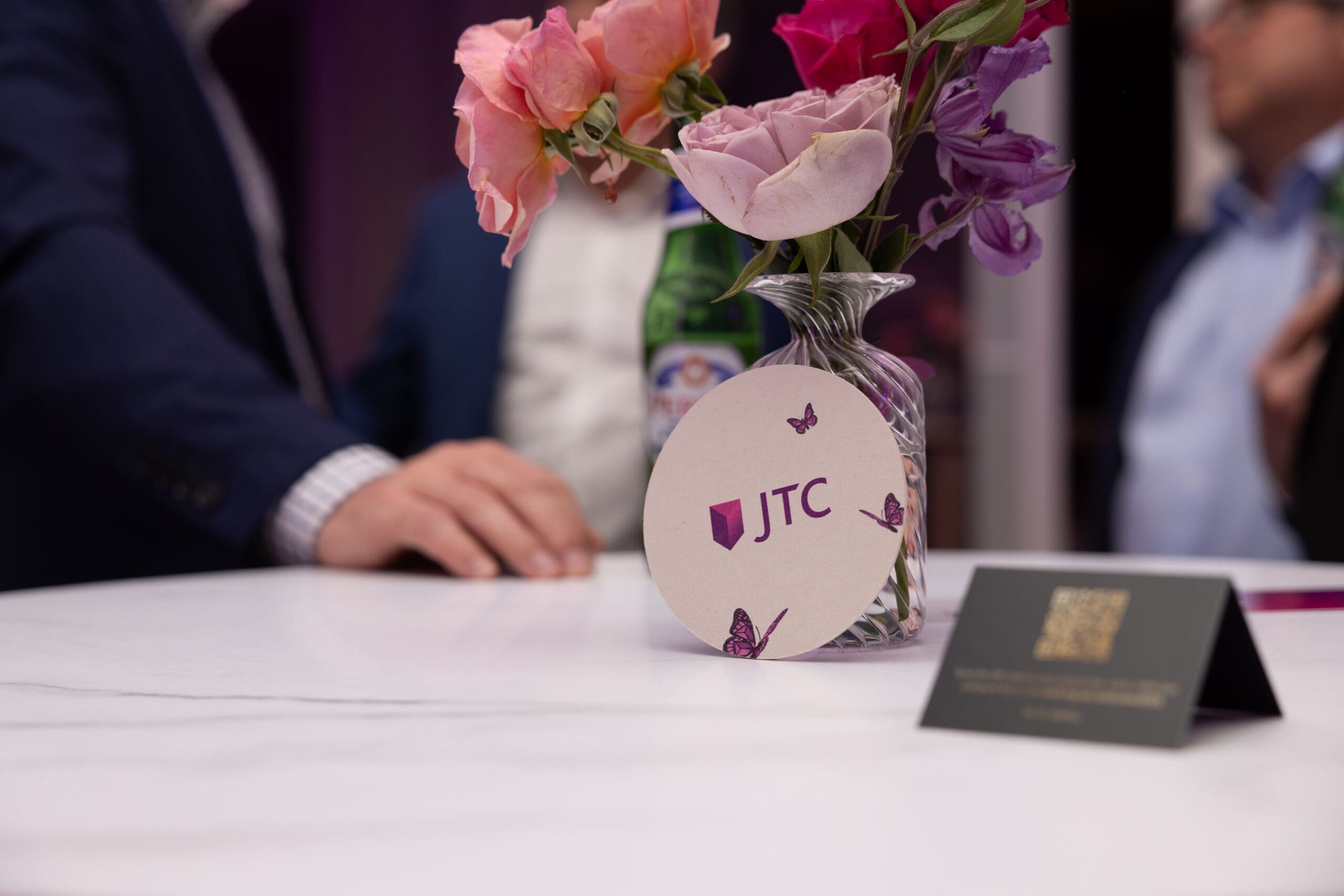At a JTC webinar on advanced 1031 exchange strategies, one theme kept coming up: surrounding yourself with the right team will make the process a whole lot easier.
Investors researching 1031 exchanges will likely come across a lot of content explaining the process and pitching different services, and the vast majority of online content will focus on the simplest type of exchange, a basic forward exchange (also called a delayed or deferred exchange) where the exchanger sells a single relinquished property and the proceeds are held by a QI until they are used to purchase a single replacement property.
But not every exchange is this simple. What if you own property overseas? What if you own a property in a partnership and your partner doesn’t want to sell, or you’ve already found your replacement property, but not a buyer for your relinquished property?
We get these questions all the time at JTC, and want to help property owners understand their options. That’s why we gathered a group of experts from across the 1031 landscape for Next-Level 1031: Maximizing Your Real Estate Potential with Like-Kind Exchanges, a virtual event where our panelists walked through how less-common exchanges can be accomplished.
One of the most important things they stressed was that with careful preparation and assembling the right team, complex exchanges may be more achievable than investors realize. But to make them happen, you need service providers who understand the ways these types of exchanges can go wrong.
1031 exchanges with foreign properties
It’s a misconception that IRC Section 1031 only applies to property in the United States. As explained by JTC National Sales Manager and Account Executive Justin Amos, moderator for the event, more and more investors are seeing the value in foreign-property exchanges.
“Over the last year, year and a half, JTC has seen an uptick in the interest and facilitation of foreign exchanges among our clients,” said Amos. But as the panelists stressed, there is one rule that can’t be avoided.
“It’s foreign property to foreign property,” said JTC Client Services Manager Nicole Vella. “You wouldn’t be able to cross U.S. to foreign or foreign to U.S.” It’s possible to exchange properties outside the U.S. with one another and properties inside the U.S. with one another, but you can’t mix the two. The good news is that as long as both properties are outside the U.S., they don’t have to be in the same country.
“We just recently had one where somebody sold in Germany and purchased in Portugal,” said Vella, who went over some of the tax considerations that come with buying and selling property in foreign countries.
“You definitely want to check with the country that you currently own the property in, because you could be subject to tax on their side,” said Vella. “If you’re buying and selling in the same country, it might make it a little easier to kind of figure out the tax guidelines there, but especially if you’re buying and selling in separate countries, you’re going to have to know the laws on each side.”
Exchangers would also need to factor in the exchange rate for each country, which could result in an unexpected boot. Vella and Amos discussed other more complex components of foreign exchanges like FIRPTA requirements and the possibility of obtaining a withholding certificate. For investors looking to execute this kind of exchange, they stressed the importance of having a Qualified Intermediary (QI) that knows about the unique factors affecting foreign exchanges.
“Each country has their own requirements, so it’s good to have a QI that’s familiar with each country and the experience with doing it,” said Vella.
Avoiding common mistakes in drop & swap 1031 exchanges
Another type of exchange that has become more common in recent years is the drop and swap exchange, in which members of a partnership are able to dissolve the partnership and convert it to a tenancy-in-common (TIC) structure so they can perform individual exchanges. As Matthew E. Rappaport and Louis J. Kesselbrenner of Falcon Rappaport & Berkman LLP explained, these types of transactions are watched closely.
“The various enforcement authorities, namely the federal government, the IRS, California authorities, Franchise Tax Board, and the New York State Department of Taxation and Finance, audit and enforce these pretty aggressively, because there is case law around this that talks about whether or not the reorganization is genuine,” said Rappaport, who went through the types of ownership structures that can be converted to a TIC and those that can’t, along with some specifics of what criteria the TIC agreement needs to meet.
“Structuring on tenant-in-common interests is very, very delicate,” said Rappaport. But once that’s accomplished, the individual owners can then pursue their own 1031 exchanges.
“When folks own tenant-in-common interests, those tenant-in-common interests are considered to be separate items of property for federal tax purposes, so every individual tenant-in-common can own their own percentage interest and then do what they like with it upon sale,” explained Rappaport.
What varies by state is the legality of converting to a TIC agreement and then performing an exchange immediately after. How long should you hold the property under the TIC before selling? There isn’t any clear guidance.
“Generally, it’s best to do it as early as possible,” said Kesselbrenner. “Before even marketing the property,” he added, conceding that sometimes this isn’t possible, which is why it’s crucial to get the little details right in the TIC agreement and the documents for the single-member LLC performing the exchange, because every bit of proof helps – which is why you need an experienced attorney to work with you.
“Getting a bona fide tenancy-in-common to make sure you can drop and swap is an art. It’s not a science, and there’s only so much guidance out there,” said Rappaport. “It’s the most popular type of thing that has a tax lawyer come into the transaction.”
Using reverse exchanges to purchase a replacement property faster
Vella explained the benefits of a reverse exchange, where the replacement property is purchased first and the relinquished property sold later. Reverse exchanges have become popular in competitive markets where it’s harder to find a replacement property because they allow exchangers to take more time to find the right replacement property.
“If some people want to go ahead and lock down exactly what they know they want to purchase, and know that they have time to go ahead and sell that relinquished property, it’s certainly a good avenue to pursue,” said Vella. “They know exactly what they want to buy, and instead of risking losing that while they’re waiting for the relinquished property to close, their benefit is to go ahead and purchase it, knowing full well, usually, that their relinquished property will sell within that 180-day timeline.”
While reverse exchanges offer unique benefits, they also have unique challenges. The exchanger can’t just purchase the replacement property, even if they have the cash to do so without a loan. Instead, an Exchange Accommodation Titleholder (EAT) takes title to the property and “parks” it under a single-member LLC. If a loan is necessary, it could be difficult to obtain, because it will be the LLC that takes out the loan.
“If you are doing the reverse where you’re purchasing the property and you’re parking the replacement property, make sure the lender’s agreeable to having the note payable under the EAT and the LLC rather than the taxpayer,” said Vella, who walked through the different types of reverse exchanges and the benefits and costs that could affect the choice to pursue them. Again, getting the right help is crucial.
“The paperwork and everything that goes with reverse exchanges is a lot more labor-intensive. And higher fees for that, too,” said Vella. “So you want to consult with your tax advisor to make sure that strategy would actually make sense for you.”
Alleviating the stress of the 1031 exchange timeline and its deadlines
Most exchangers are familiar with the 1031 exchange timeline, which is the same for both forward and reverse exchanges. But while the timeline is strict, it isn’t always obvious. When the floor was opened for questions, one attendee asked how the timeline is calculated when you’re selling multiple properties in one exchange.
“The timeline, if you would like to combine the two into one exchange, would start with the sale of the first property, so that both properties would be tied to the 45 & 180-day dates based off the first sale,” said Vella.
Amit Urban of Fortitude Investment Group explained that just because the exchange must be completed by Day 180 doesn’t mean work begins on Day One; ideally, it should begin much earlier.
“With proper planning, you’re not really bound to the 45-day identification period and 180-day closing period,” said Urban. “Working with a broker or a professional that understands 1031 exchanges, you can really get ahead of the process.”
As Urban explained, by understanding your goals and preparing with your team ahead of time, you can narrow down your search considerably before the exchange begins. That way, “you’re not scrambling to find a replacement property,” potentially overpaying, or “getting into a property that may not be ideal for you” just to meet the deadline.
“It’s very important to start early. Engage a Qualified Intermediary,” said Urban. “Am I getting ahead of the ball and working with a QI like JTC, who’ve done this process over and over again? They can shed some light on the road map and how to get there and ultimately have a successful exchange in the process.”
JTC has been a QI for all types of exchanges, and we have specific expertise in less-common scenarios like reverse exchanges, foreign exchanges, and drop & swap transactions that other QIs might not be familiar with. As Urban summed it up, working with the right team can mean the difference between a successful exchange and an unexpected tax bill.
“I can’t re emphasize it too much: surround yourself with expert advisors to help you through the process,” he said.
Key contact
Stay Connected
Stay up to date with expert insights, latest updates and exclusive content.
Discover more
Stay informed with JTC’s latest news, reports, thought leadership, and industry insights.
Let’s Bring Your Vision to Life
From 2,300 employee owners to 14,000+ clients, our journey is marked by stability and success.





















